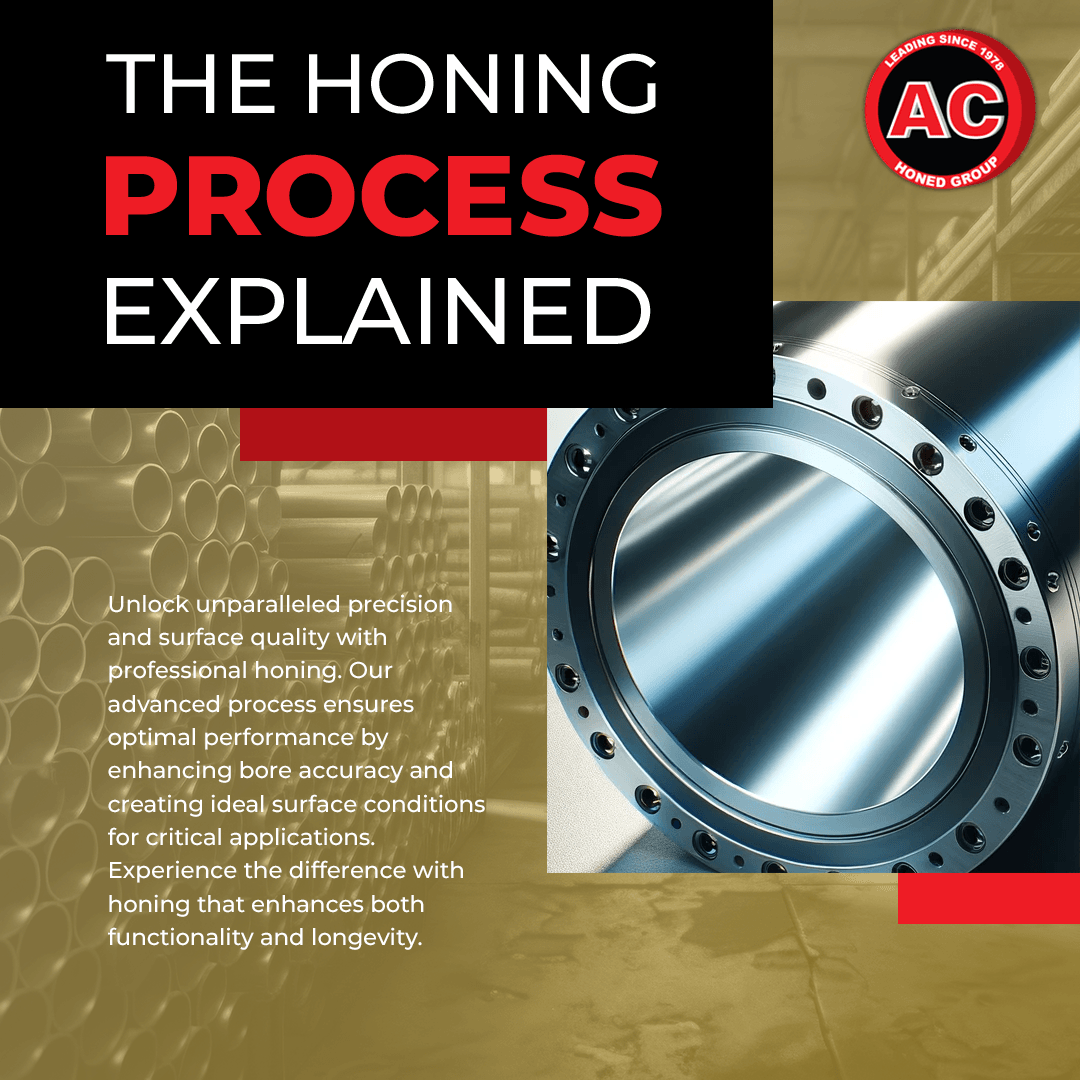Precision in manufacturing is not just a requirement but a necessity, especially in applications involving complex machinery and hydraulic systems. The honing process stands out as a critical technique for achieving exceptionally smooth surfaces and precise bore dimensions in cylindrical components.
What is Honing?
Honing is an abrasive machining process that improves the geometry of a surface and the dimensional accuracy of cylindrical components. Unlike grinding, honing removes material from the inside of a tube or cylinder. The process uses a set of abrasive stones or rings that rotate and move longitudinally along the surface, grinding away imperfections to create a precise diameter and a smooth finish.
The Steps of the Honing Process
- Bore Sizing: Honing starts with sizing the bore to precise dimensions. The abrasive stones expand against the surface, controlled by a predetermined pressure, to ensure consistent material removal.
- Surface Texture Enhancement: As the honing stones move back and forth, they not only remove peaks but also leave behind a crosshatched pattern. This texture is beneficial as it helps to retain lubricating oil, crucial for components like hydraulic cylinders.
- Final Inspection: Post-honing, the components are inspected for dimensional accuracy and surface finish to ensure they meet strict industry standards.
Benefits of Honing
- Enhanced Surface Finish: Achieves surfaces as smooth as RA 0.4 micrometers, essential for high-performance applications.
- Improved Sealing and Performance: The crosshatch pattern produced during honing enhances lubrication retention and sealing, crucial for hydraulic systems.
- Versatility: Can be applied to a variety of materials including cast iron, steel, aluminium, and ceramics.
- Precision Tolerance: Honing can achieve surface finishes and geometries that other finishing methods cannot, making it ideal for applications requiring extreme precision.
Applications of Honing
- Hydraulic Cylinders: Where smooth surfaces and tight seals are necessary to handle high pressure without leakage.
- Gears and Bearings: Where precision surface finish is essential to ensure smooth operation and to extend the life of the components.
The honing process is more than just a finishing technique; it's a vital part of manufacturing that ensures the functionality and efficiency of many of the machines we rely on today. Whether it’s in automotive, aerospace, or hydraulic applications, honing is indispensable for achieving the high levels of precision and surface integrity required.
Need precision honing services that meet your exact specifications?
Contact AC HONED TUBE today to learn how our honing solutions can enhance your project's success.

